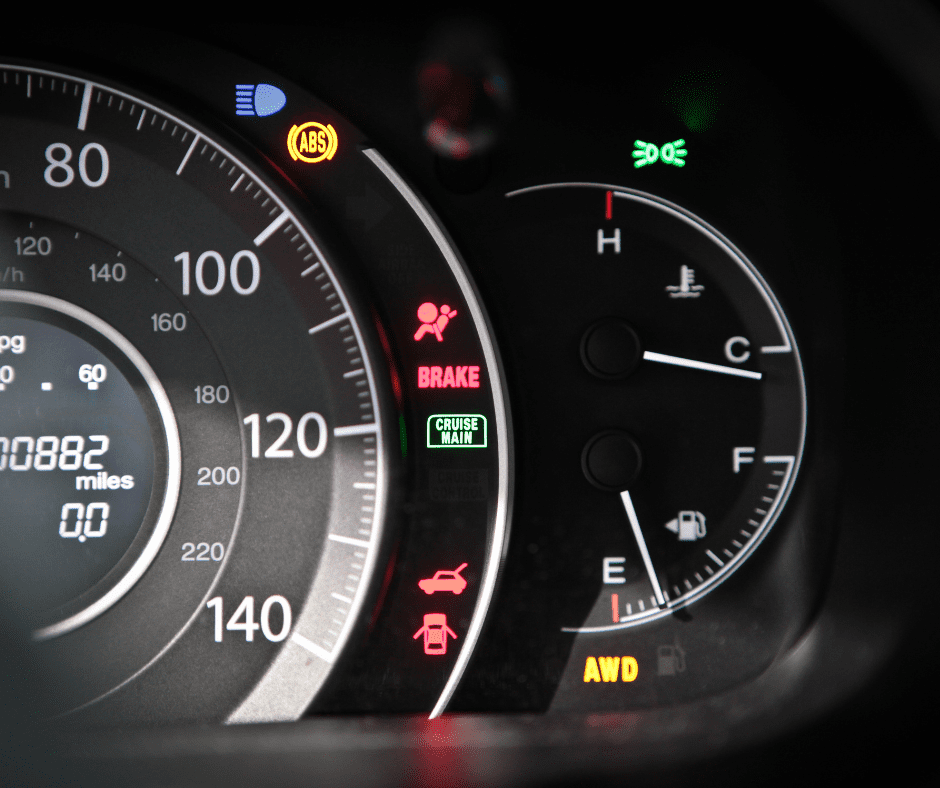Navigating the language of your car’s dashboard warning lights is essential for maintaining your vehicle’s health and your safety. Picture your car as a friend who, albeit not verbally, never fails to communicate crucial alerts to you. These messages come in the form of safety lights or warning icons on your car’s dashboard. Each time you start your car, these light icons light up for a moment as if performing a morning stretch before your car get’s started on its day.
But what happens when an alert icon decides to persist, or worse, doesn’t light up at all during the car’s initial self-check routine? Ignorance or indifference towards these warning lights can transform a minor issue into a significant problem that’s not only expensive to fix but could also compromise your safety. Understanding the language of these flashing icons will serve as a critical communication line between you and your car.
We have created this guide to break down the top 20 most common dashboard warning lights, explaining what your car is trying to tell you and how you should respond.
- 1. Engine Warning Light (Check Engine Light): This light icon is your car’s way of indicating potential engine issues, big or small, such as a loose gas cap. Don’t ignore it; promptly schedule a visit to your mechanic to avoid potential damage.
- 2. Oil Pressure Warning Light: This alert icon signifies low engine oil pressure, a condition that could cause severe engine damage. Stop the vehicle and check the oil level. If the oil level is fine but the light remains on, consult with a mechanic immediately.
- 3. Battery Charge Warning Light: When you see this warning icon, your car’s battery charge might be low or the charging system might be faulty. To avoid getting stranded with a dead battery, get the electrical system checked out promptly.
- 4. Brake Warning Light: This safety light implies potential issues with the braking system. If the light stays on after releasing the handbrake, it may indicate a drop in break fluid level or a severe system fault. Immediately seek professional help.
- 5. ABS Warning Light: If this icon lights up, your Anti-lock Braking System might have a problem. This doesn’t mean your brakes aren’t working, but they may not perform optimally during emergency braking. It is best to ensure your safety and get it checked.
- 6. Engine Temperature Warning Light: This warning icon informs you that your engine’s temperature has exceeded its normal range. Pull over, allow the engine to cool down, and consult a professional if the light stays on
- 7. Tire Pressure Warning Light: An illuminated tire pressure light means that your tires might be underinflated. Check and adjust the pressure as needed. If the light still shines, have your tires inspected.
- 8. Airbag Warning Light: An alert icon like this indicates an issue with the airbag system. The airbags may not deploy in a crash if this light is on, which can be dangerous, don’t delay getting this checked out.
- 9. Traction Control Light: If this safety light keeps flashing, there could be a fault in the traction a control system. Have it checked out by a professional.
- 10. Service Engine Soon Light: Similar to the check engine light, this icon indicates that your vehicle needs servicing. Don’t delay a visit to your mechanic.
- 11. Gas Cap Warning Light: This alert icon tells you that the gas cap isn’t properly secured. Stop the vehicle and secure the gas cap. If the light stays on, the cap may need to be replaced.
- 12. Security Warning Light: This light usually indicates a potential issue with your car’s security system. Have the system inspected to prevent potential issues with vehicle startup or security.
- 13. Power Steering Warning Light: This light signals a problem with the power steering system, affecting your ability to steer the vehicle. Avoid driving if possible and consult a mechanic.
- 14. Transmission Temperature Light: This warning light suggests that your transmission fluid is hotter than usual, suggesting a potential problem. Stop driving to avoid serious transmission damage and get your vehicle checked out.
- 15. Fog Lamp Warning Light: This icon simply informs you that your fog lights are on. Ensure to switch them off when not in use.
- 16. Coolant Warning Light: This icon implies that your coolant level is low or there’s an issue with the cooling system. Check the coolant level and refill if necessary. If the light persists, consult a mechanic.
- 17. Door Ajar Warning Light: This safety light indicates that a door is not fully closed. Stop safely and check all doors.
- 18. Overdrive Light: This icon lights up when your car’s overdrive system is turned off. If you didn’t manually deactivate the overdrive, your vehicle might be doing it due to a system problem. Consult with a professional if it turns on without you manually deactivating the system.
- 19. Washer Fluid Reminder: This friendly reminder tells you that your windshield washer fluid is low. Just top it up.
- 20. ESP Fault Warning Light: This light indicates a problem with your Electronic Stability Program (ESP) system, which helps you maintain control of your car in tricky driving situations. If the ESP light stays on, get it inspected at a service center.
So as we said before, understanding the icon for warning lights on your car’s dashboard is critical. Always remember, these lights are your car’s mode of communication, guiding you towards maintaining its health and your safety. Keep this guide handy, and always refer to your vehicle’s owner manual for specifics. Ignoring these alert icons can lead to costly repairs or compromise your safety. Listen to what your car is trying to tell you, and you can ensure a smoother and safer journey.
